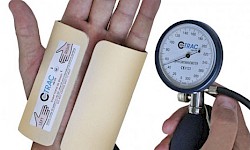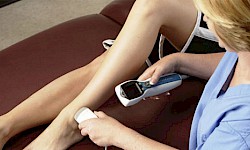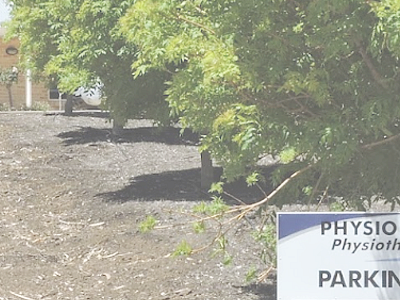What is a Foam Roller?
The foam roller is made of hard celled foam rubber, and is available in different sizes and varying hardness. They are now available in a variety of different models but the traditional foam roller is more economical and is "tried and tested".
Why use a Foam Roller
Using a foam roller is an affordable alternative to a massage, though not as effective as hands on manipulation from a qualified therapist a foam roller is still very effective. Combined with the low cost and ease of accessibility, the foam roller is a very powerful tool.
Sport, exercise, work and the general demands of our life place significant demands on our bodies. Either metabolic bi-products associated with activity, disuse or prolonged postures can cause muscle and joint to stiffen up, often in a less than ideal position. The foam roller is an effective tool to stretch or “release” certain muscles and even stretch “mobilise” some joints.
How does the Foam Roller Work?
The superficial facia is a soft connective tissue located just below the skin. It wraps and connects the muscles, bones, nerves and blood vessels of the body. Together, muscle and fascia make up what is called the myo-fascia system. For various reasons including disuse, not enough stretching, poor posture or injuries the facia and underlying muscle tissue can become stuck together. This is called an adhesion and it results in restricted muscle movement. It also causes pain, soreness and reduced flexibility or range of motion.
Myo-fascial release is a technique in which the practitioner uses sustained pressure on the soft tissues whilst applying traction to the facia. The technique results in the softening and lengthening (release) of the facia and the breaking down of adhesions between the skin, facia, muscles and bones. Myo facial release has been shown to relieve various muscle and joint pains such as shin splints, patella femoral join pain, ITB syndrome etc.
How to use the Foam Roller
- Place the foam roller on or around the muscles that are tight or overactive. You can pretty much use it on any muscle.
- Work from the proximal aspect of the body part (nearest to the centre of the body0 then work the distal aspect of the body part (away from the centre of the body), this targets the Golgi Tendon Organ, next work in between these two points (the belly of the muscle).
- Muscles are three dimensional so roll up, down and across the muscle to find the tender points.
- When you find a tender spot, hold that spot for 30-60 seconds or until the discomfort decreases by approximately 50-75%.
- Make sure you breathe and relax when a tender spot is found.
- Continue rolling the foam roller over the muscle to find any other tender spots.
- To apply more pressure on the lower body, you can go to use a single leg or stack one leg on top of the other.
- You can also take a more of a self-massage approach if there are no major tender spots. Use long slow sweeping strokes on long muscle groups such as calves, quadriceps, hamstrings and adductors.
When to use a Foam Roller?
You can use the foam roller before your workout as part of your warm up, after your workout as part of your cool down or on a different day as part of your recovery. Using the foam roller after a brief warm up at the start of your workout will get your body ready for the upcoming exercises by releasing tight muscles and improving tissue quality, allowing you to move freely and perform better. After your workout the foam roller can be used as part of your cool down by bringing your body back to a more rested state and releasing tension built up by your workout. On recovery days the foam roller is great for getting rid of any niggles and bringing tight muscles back towards normal.
If I had to choose the best time to use the foam roller I would pick the start of a workout. This is because it will allow your body to move better and get more from the workout. Also by using the foam roller at the start of the workout you are more likely to incorporate it in your routine.







